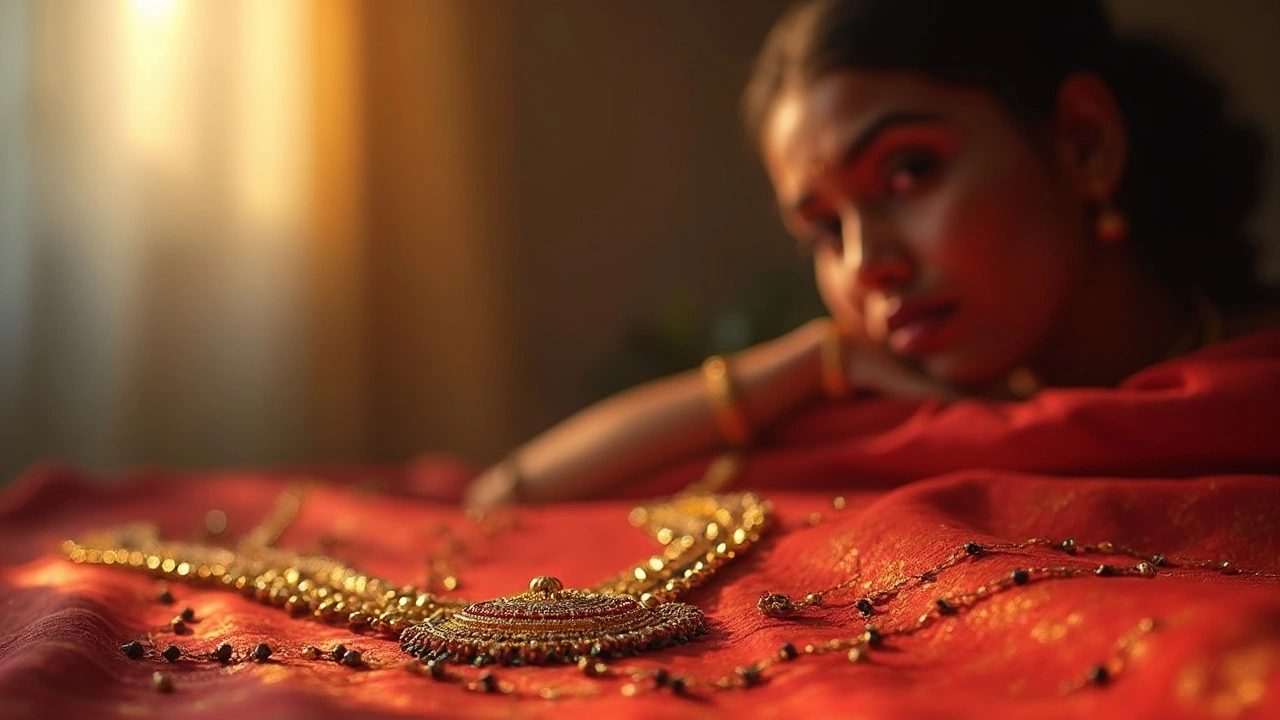
Curious about what it means if a mangalsutra breaks? Uncover the facts, superstitions, and traditions behind a broken mangalsutra and learn what you should actually do.
When talking about Superstitions, deep‑rooted folk beliefs that guide everyday actions, especially around adornments. Also known as folk myths, they influence jewelry choices across generations. For example, the belief that a Mangalsutra, the red‑and‑gold necklace tied during Hindu weddings can protect a marriage has led families to treat it as a sacred security token. Similarly, the Bindi, the decorative dot on the forehead is thought to channel energy and ward off negativity, tying personal style to spiritual safety. The Sikh Kada, the steel bracelet worn on the wrist is believed to remind the wearer of strength and honesty, while a Nose pin, the tiny stud or hoop in the nostril is often linked to marital bliss and protection against evil eyes. These beliefs create a web where culture, ritual, and personal expression intersect.
Because superstitions span both daily wear and special occasions, they shape wedding customs too. The ritual of who gifts or ties the mangalsutra, for instance, varies by region and even by family, reflecting local myths about luck and prosperity. In many north‑Indian homes, the bride’s maternal uncle hands over the necklace, a practice tied to the belief that maternal blessings bring stronger protection. In southern states, the groom’s side may take the lead, echoing a different set of protective narratives. Understanding these patterns helps you navigate the etiquette without stumbling over unspoken rules.
The symbolism behind a bindi goes beyond fashion. Some say a bright red dot balances the Ajna chakra, the “third‑eye” center, while others view it as a sign of marital status. Whatever the origin, the bindi’s placement and color can signal everything from a festive mood to a protective shield against envy. Modern women often switch to decorative designs, yet many still keep the traditional red for its reputed power to keep negativity at bay.
When it comes to the kada, the superstitious angle is linked to historic warrior culture. Wearing steel is thought to deflect harmful thoughts and physical threats, turning the bracelet into a talisman rather than just an accessory. Even non‑Sikhs sometimes adopt the kada for its perceived strength‑boosting qualities, though respecting its cultural roots is essential. The belief that the kada can ward off evil is strong enough that many avoid gifting it to strangers, preferring to keep it within trusted circles.
Nose pins carry their own set of myths. In many Indian communities, the left nostril is pierced because it’s believed to ease childbirth and promote marital harmony. Some families even consider a specific gemstone setting—like ruby or emerald—to enhance the wearer’s luck in love and wealth. Knowing these nuances can guide you when choosing a design that respects tradition while fitting personal style.
Beyond the big pieces, even tiny charms hold superstitious weight. A small gold toe ring, for example, is thought to regulate metabolism and protect against illness, while a pearl necklace might be avoided by those who fear it can dampen vigor according to certain astrological charts. Such beliefs illustrate how every layer of jewellery can be a conduit for cultural stories, health hopes, or protective rituals.
Our curated articles below unpack these myths in detail: from who actually gives the mangalsutra at weddings, to why Sikhs keep their hair uncut, to the price battle between diamonds in India and the USA. Whether you’re hunting for the perfect piece, curious about the lore behind it, or just love a good cultural story, you’ll find practical insights that blend tradition with today’s style. Dive in and see how superstition still shapes Indian jewellery choices across the country.

Curious about what it means if a mangalsutra breaks? Uncover the facts, superstitions, and traditions behind a broken mangalsutra and learn what you should actually do.